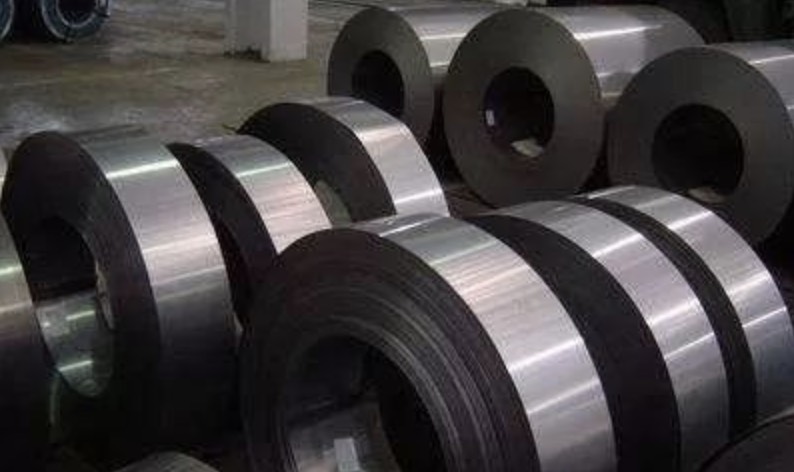Welcome:Pourleroi
In the intricate tapestry of modern electrical systems, one integral component stands as a linchpin in the pursuit of efficient power transmission – the silicon steel core. This unassuming yet crucial element forms the backbone of transformers, playing a pivotal role in the seamless conversion and distribution of electrical energy. As we embark on a journey to unravel the significance of silicon steel cores, this introduction sets the tone for a comprehensive exploration into their composition, structural intricacies, and the profound impact they wield in advancing energy efficiency within the power industry.
Silicon steel cores, often synonymous with electrical steel or transformer steel, emerge as the unsung heroes in the realm of electrical engineering. Beyond their apparent structural role, the composition and intricate design of these cores intricately shape the performance and energy dynamics of transformers, thereby influencing the very bedrock of power transmission.
Within the dynamic landscape of the power industry, silicon steel cores transcend mere components, emerging as critical architects of efficient energy transmission. Their significance extends far beyond structural robustness, delving into the realms of heightened energy efficiency, reduced losses, and a more sustainable energy ecosystem.

Our journey into the realm of silicon steel cores promises a profound exploration of their composition, manufacturing intricacies, and multifaceted applications across industries. Through this exploration, readers will gain a nuanced understanding of why silicon steel cores occupy a central position in the field of electrical engineering. From their transformative role in transformers to their evolving applications, this odyssey aims to unveil the essence of silicon steel cores and their indispensable contribution to shaping the trajectory of power transmission and utilization.
In the realm of electrical engineering, the silicon steel core stands as a foundational component, instrumental in the efficient transformation and transmission of electrical energy. Its basic concept lies in its role as the magnetic core within transformers, serving as a conduit for the dynamic interplay of magnetic fields, currents, and voltage.
At its core, both literally and figuratively, the silicon steel core is a laminated structure comprising thin layers of silicon steel sheets. These sheets are carefully stacked and insulated from one another to minimize eddy current losses and hysteresis losses during the cyclical magnetization and demagnetization processes occurring in transformers. The choice of silicon steel, characterized by its high magnetic permeability and electrical resistivity, is deliberate, aiming to enhance the core's efficiency by mitigating energy losses.
The concept further delves into the core's geometric design. Typically toroidal or E-I shaped, the core is crafted to optimize magnetic flux linkage and minimize magnetic leakage. This geometric precision ensures that a maximum amount of magnetic energy is efficiently transferred from the primary winding to the secondary winding, minimizing energy losses and maximizing the transformer's overall efficiency.
As we explore the basic concept of the silicon steel core, it becomes evident that its design is not arbitrary; rather, it is a calculated and precise engineering solution. By understanding its fundamental principles, we lay the groundwork for a deeper comprehension of how this unassuming yet crucial component profoundly influences the efficiency and performance of transformers within the intricate landscape of electrical power systems.
The silicon steel core, the backbone of transformers in electrical systems, derives its unparalleled functionality from a meticulously selected material composition. At its essence, this crucial component is predominantly crafted from high-quality electrical steel, often referred to as silicon steel or transformer steel.
The primary material, silicon steel, is chosen for its distinctive properties that synergistically contribute to the core's efficiency. Comprising iron and a controlled percentage of silicon, typically ranging from 2% to 4%, this alloy exhibits heightened magnetic permeability. Silicon's presence minimizes the eddy current losses that would otherwise occur during the cyclical magnetization and demagnetization processes within the core.

The silicon steel sheets, meticulously cut and precisely stacked to form the laminated structure, undergo surface insulation to impede unwanted electrical currents between adjacent layers. This lamination process further reduces hysteresis losses, ensuring that the core efficiently converts electrical energy with minimal dissipation.
In essence, the material composition of the silicon steel core is a deliberate selection aimed at optimizing magnetic properties while mitigating energy losses. The strategic alloying of iron with silicon, coupled with precise manufacturing techniques, culminates in a core that not only enhances transformer performance but also aligns with the overarching goal of achieving energy efficiency in electrical power systems.
Silicon Steel Core in Power Transformers: Functionality
The silicon steel core serves as the linchpin in the intricate machinery of power transformers, playing a pivotal role in the conversion and transmission of electrical energy. Its primary function lies in facilitating efficient magnetic flux linkage between the primary and secondary windings.
As alternating current flows through the primary winding, the silicon steel core, with its high magnetic permeability, undergoes cyclical magnetization and demagnetization. This dynamic process induces a magnetic field that traverses the core and links with the secondary winding. The laminated structure of the core minimizes eddy current losses, ensuring that the energy transfer remains highly efficient.
The core's geometric design, often toroidal or E-I shaped, optimizes the magnetic flux path, reducing magnetic leakage and enhancing the transformer's overall efficiency. In essence, the silicon steel core acts as a magnetic conduit, facilitating the seamless transfer of energy between windings, thereby ensuring the transformer's reliability and performance within the broader landscape of electrical power systems.
The utilization of silicon steel cores in the power industry unfolds through diverse applications, showcasing their adaptability and efficiency. One notable example lies in power transformers. The silicon steel core serves as the foundational element, ensuring the seamless transformation and transmission of electrical energy. Through optimized magnetic properties and geometric precision, these cores minimize energy losses and enhance the overall efficiency of power transformers. The reliability and performance of transformers in power substations, grid systems, and industrial power distribution owe a significant debt to the application of silicon steel cores.
Among the trailblazers in the realm of silicon steel core manufacturing is Pourleroi, a pioneering company committed to advancing transformer technology. Pourleroi's unwavering dedication to precision engineering and cutting-edge materials sets them apart. Specializing in the production of high-quality silicon steel cores, Pourleroi tailors solutions to meet the unique demands of various industries, ensuring optimal performance and energy efficiency. With a focus on research and innovation, Pourleroi stands as a reliable partner in shaping the future of power transmission and utilization. Their commitment to excellence is evident in their transformative impact on power transformers and broader contributions to the evolution of electrical power systems.
By continuing to use the site you agree to our privacy policy Terms and Conditions.